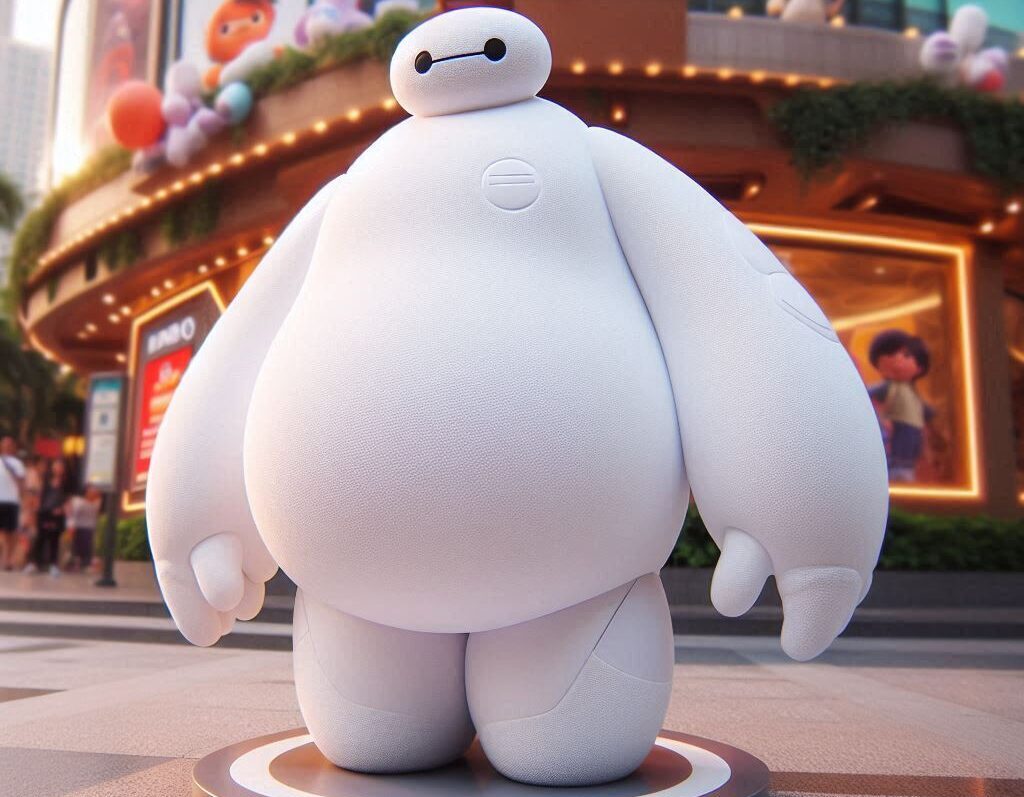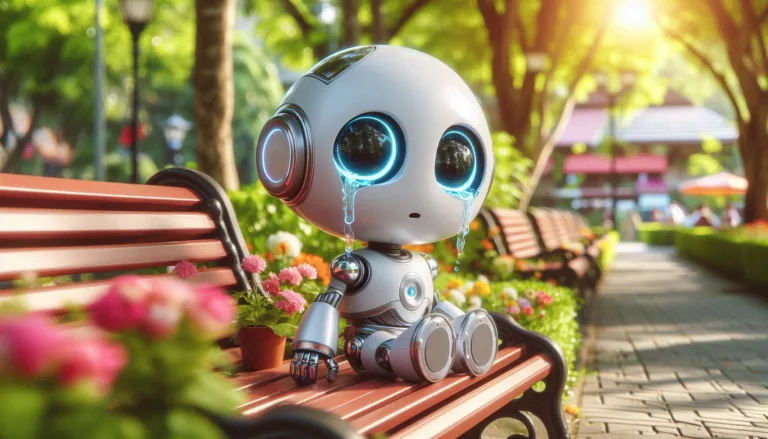The animated character Baymax from Disney’s “Big Hero 6” captures the imagination with its blend of compassion, intelligence, and technological innovation. As a healthcare companion, Baymax represents the future of personal care and robotics, combining artificial intelligence (AI), soft robotics, and advanced medical technology. While Baymax is a fictional creation, the concepts behind its design and functionality are rooted in cutting-edge science and technology, raising the question: Could we create a real-world Baymax? This article explores the AI and robotics behind Baymax, the technological and scientific principles needed to bring such a robot to life, and the potential impact of this technology on society.
1. The AI Behind Baymax: A Revolution in Healthcare
Baymax’s most notable feature is its AI, designed to diagnose and treat medical conditions with precision and empathy. In the real world, AI has made significant strides in healthcare, with applications ranging from diagnostic tools to personalized medicine. However, creating an AI with the same level of autonomy and compassion as Baymax presents unique challenges.
1.1. AI in Diagnostics and Treatment
Baymax’s AI can instantly diagnose a wide range of medical conditions using sensors to scan the patient’s body. In real life, AI-driven diagnostic tools already exist, using machine learning algorithms to analyze medical images, genetic data, and patient records. For instance, AI systems like IBM’s Watson Health can analyze massive amounts of data to suggest treatment options for cancer patients. Similarly, AI tools are being developed to diagnose conditions such as diabetes, heart disease, and neurological disorders by analyzing patterns in medical data.
However, the accuracy and reliability of these AI systems depend heavily on the quality of data and the algorithms used. In Baymax’s case, the AI would need to integrate data from various sources, including real-time health monitoring, medical history, and genetic information, to make accurate diagnoses. Furthermore, it would require advanced natural language processing (NLP) capabilities to communicate effectively with patients, understand their symptoms, and provide clear explanations and instructions.
1.2. Emotional Intelligence in AI
One of Baymax’s defining traits is its ability to empathize with patients and offer emotional support. In the real world, developing AI with emotional intelligence (EQ) is a growing field of research. Emotional AI, or affective computing, involves creating systems that can recognize, interpret, and respond to human emotions. This could be achieved through analyzing facial expressions, voice tones, and physiological signals like heart rate and skin conductance.
To replicate Baymax’s ability to comfort and reassure patients, an AI system would need to accurately gauge a patient’s emotional state and respond appropriately. This would require not only sophisticated algorithms but also a deep understanding of human psychology. AI systems like Replika and Woebot are early examples of chatbots designed to provide emotional support, but they are far from achieving the level of empathy and understanding seen in Baymax. The integration of AI with robotics could take this further, creating a physical presence that can offer comfort through gestures and physical interaction.
2. The Robotics of Baymax: Soft Robotics and Human-Centered Design
Baymax’s design is unique, characterized by its soft, inflatable body, which makes it non-threatening and physically safe for human interaction. This concept draws from the field of soft robotics, a branch of robotics focused on creating robots made of flexible materials that can safely interact with humans and adapt to complex environments.
2.1. Soft Robotics: Creating Safe and Adaptable Machines
Traditional robots are often rigid and can pose safety risks when interacting with humans. Soft robotics, on the other hand, uses materials like silicone, rubber, and other polymers to create robots that are flexible, lightweight, and capable of gentle interaction. These robots can change shape, grip objects delicately, and even absorb impacts without causing harm.
In the case of Baymax, the inflatable body provides a cushiony exterior, reducing the risk of injury in case of accidental collisions. To create a real-world Baymax, engineers would need to develop advanced soft robotic materials that can be inflated and deflated as needed, while still maintaining durability and structural integrity. Additionally, the robot would require sensors embedded in its body to detect pressure, touch, and temperature, enabling it to interact safely and effectively with people.
Soft robotics has already found applications in various fields, including medical devices, prosthetics, and search-and-rescue missions. For example, soft robotic grippers are used in manufacturing to handle delicate objects without damaging them. In healthcare, soft robotic exoskeletons can assist patients with mobility impairments by providing gentle support and enhancing their movement.
2.2. Human-Centered Design: A Robot that Cares
Baymax’s design is not only about safety but also about creating a robot that feels approachable and comforting. This is where human-centered design comes into play—a design philosophy that prioritizes the needs, emotions, and experiences of the user.
To create a real-world Baymax, designers would need to focus on the robot’s appearance, behavior, and interaction style. The robot would need to be aesthetically pleasing, with a design that inspires trust and comfort. Its movements should be smooth and natural, mimicking human gestures to make interactions feel more intuitive and less mechanical. Moreover, the robot’s voice and communication style would need to be carefully crafted to convey warmth, empathy, and understanding.
Human-centered design is increasingly being applied in robotics and AI, particularly in the development of social robots. Robots like Pepper and Jibo are designed to interact with people in social settings, using body language, facial expressions, and natural language to communicate. While these robots are still relatively simple compared to Baymax, they represent the first steps toward creating machines that can build meaningful relationships with humans.
3. The Future of Healthcare Robots: Challenges and Opportunities
While the technology to create a real-world Baymax is advancing, several challenges remain. These include ethical considerations, technical limitations, and the need for interdisciplinary collaboration. However, the potential benefits of such technology are immense, particularly in the field of healthcare.
3.1. Ethical Considerations: Privacy, Autonomy, and Trust
One of the biggest challenges in developing healthcare robots like Baymax is addressing the ethical implications. Privacy is a major concern, as these robots would have access to sensitive medical information and personal data. Ensuring that this data is protected and used responsibly is crucial to maintaining trust between patients and AI systems.
Another ethical issue is autonomy—how much decision-making power should be given to an AI healthcare companion? While Baymax in “Big Hero 6” makes decisions based on its programming to prioritize patient health and safety, real-world AI systems must be designed to respect patient autonomy and make recommendations rather than decisions.
Trust is also a critical factor. For patients to accept and use AI healthcare companions, they must trust that the robot will act in their best interest. This trust must be built through transparent communication, reliability, and the consistent delivery of high-quality care.
3.2. Technical Limitations: Bridging the Gap Between Fiction and Reality
While significant progress has been made in AI and robotics, several technical hurdles must be overcome to create a real-world Baymax. One of the biggest challenges is developing AI that can understand and respond to the full range of human emotions and medical conditions. This requires not only advanced algorithms but also extensive training data, which must be diverse and representative to ensure the AI can handle a wide variety of situations.
Another technical challenge is the integration of soft robotics with AI. Soft robots are still relatively new, and creating a robot like Baymax that can move fluidly, interact safely with humans, and perform complex medical tasks is a formidable task. This requires advances in material science, sensor technology, and robotic control systems.
Powering a robot like Baymax is another challenge. Soft robots often require a lot of energy to operate, especially if they need to inflate and deflate parts of their body. Developing lightweight, long-lasting power sources that can support extended operation without frequent recharging is essential for the practicality of such robots.
3.3. Opportunities: Transforming Healthcare and Beyond
Despite the challenges, the potential impact of a real-world Baymax on healthcare and other fields is enormous. Healthcare robots could revolutionize patient care, particularly in areas where there is a shortage of medical professionals. Robots like Baymax could provide personalized care to patients with chronic conditions, assist the elderly with daily activities, and offer companionship to those who are isolated.
In addition to healthcare, the technology behind Baymax could be applied to other areas, such as education, customer service, and disaster response. For example, a robot with similar capabilities could be used to provide personalized tutoring to students, assist customers in retail environments, or help rescue workers navigate hazardous environments during emergencies.
The development of such robots also presents economic opportunities, with the potential to create new industries and jobs in robotics, AI, and healthcare. Companies that specialize in AI, robotics, and medical technology could collaborate to develop and commercialize these robots, leading to advancements that benefit society as a whole.
Conclusion: While Baymax remains a fictional character, the technology and concepts that inspire its design are rapidly becoming a reality. Advances in AI, soft robotics, and human-centered design are bringing us closer to creating robots that can provide compassionate, personalized care. However, significant challenges remain, including ethical considerations, technical limitations, and the need for interdisciplinary collaboration.
The development of a real-world Baymax would require the integration of cutting-edge AI with advanced soft robotics, all while prioritizing safety, trust, and empathy. If these challenges can be overcome, the impact on healthcare and beyond could be transformative, offering new solutions to some of the most pressing issues facing society today. As technology continues to evolve, the dream of creating a robot like Baymax may one day become a reality, bringing us closer to a future where compassionate care is available to all, regardless of location or circumstance.




